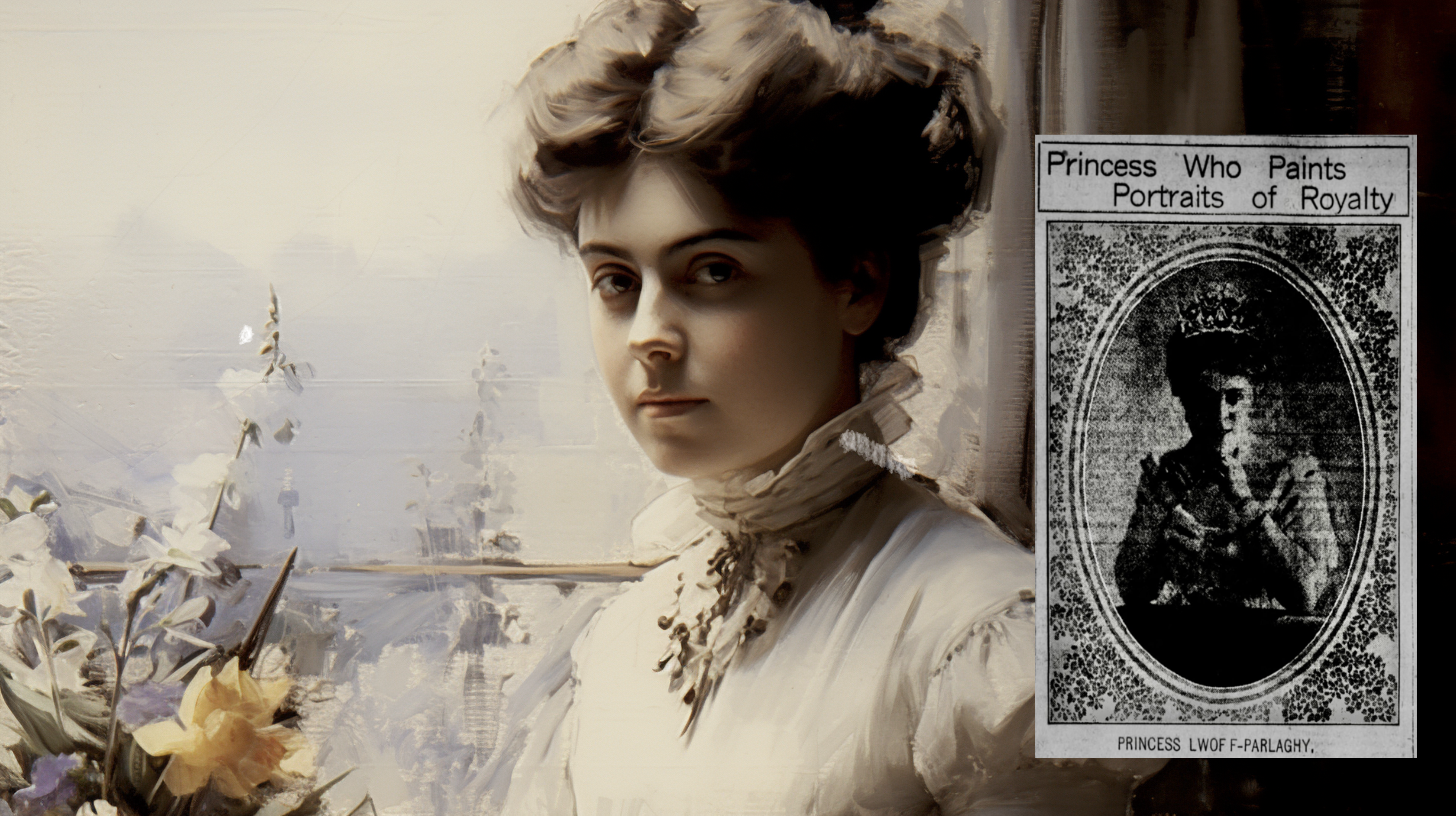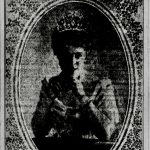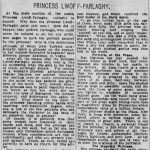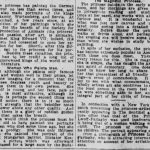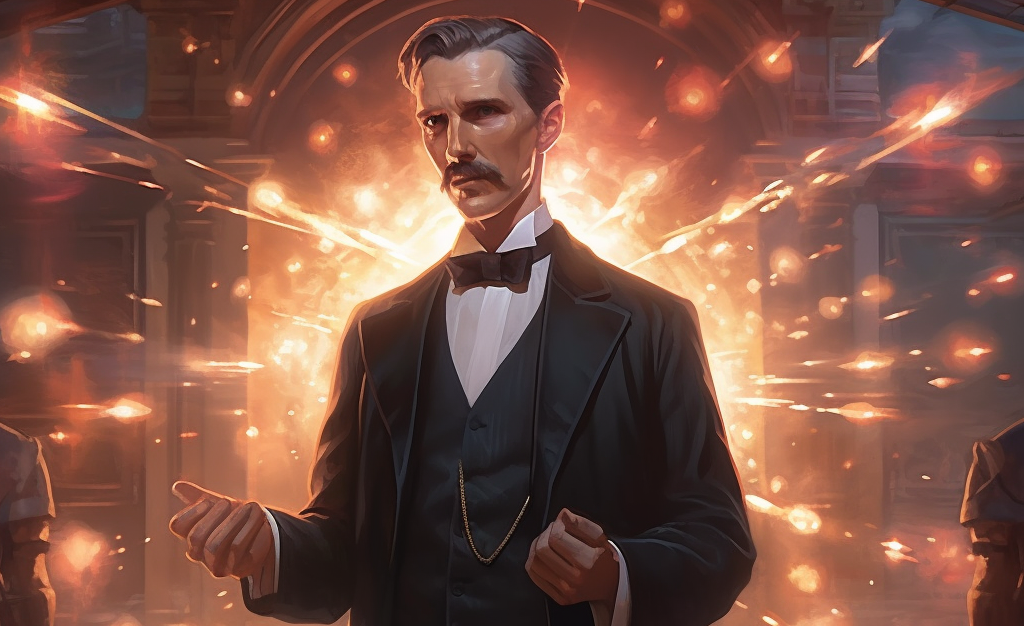“How did it happen that Andrew Carnegie, who could never be induced to sit for any artist, was eager to have his portrait painted by the Princess?” – Rebecca Hooper Eastman in Vogue Magazine
The Knoxville Sentinel
PRINCESS LWOFF-PARLAGHY
At the mere mention of the name, Princess Lwoff-Parlaghy, curiosity is piqued. Why does Princess Lwoff-Parlaghy paint only men? How did it happen that Andrew Carnegie, who could never be induced to sit for any artist, was eager to have his portrait painted by the princess? Who is this mysterious princess, of whom New Yorkers occasionally catch a glimpse on the avenue, in her coronet-decorated brougham?
The catalog of a woman’s physical attractions—her regular features, her unlined forehead, her smiling eyes—is quite uninteresting to the artist who has painted the great men of the world. Why, indeed, should the princess care to paint beautiful women, lovely as they are, when she has made the eyes of Bismarck, the German emperor, and Sudermann live again on canvas?
“Who is this mysterious princess, of whom New Yorkers occasionally catch a glimpse on the avenue, in her coronet-decorated brougham?”
What would be the point in the princess depicting pretty hands with tapering, well-manicured fingers, when she is one of the few painters who can delineate the character in the hand of a general? Some women have character in their hands and faces, and the princess has painted a few such, but so far she has chosen only Europeans—grand duchesses, women whose countenances are full of individuality, and who are seventy years and upward. Youth, as such, seems apparently to have no charm for this artist.
The princess has painted the German emperor and has also made portraits of the royalty of Saxony, Wurttemberg, and Serbia. At Marienbad, a few years since, at an exhibition of her paintings which she gave for the benefit of the Society for the Protection of Animals (the princess’s second passion, after art, is animals), she met King Edward VII. Indeed, His Majesty had consented to open her exhibition for her. Shortly after this, Edward sat to the princess for his portrait. Besides these royalties, the princess has to her credit a long list of the uncrowned kings of the world of art and literature.
Woman Who Paints Men
But although she paints only famous men, do not for a moment think the princess despises youth and beauty or scorns them in her own person. She herself is young, and her face, pale as it is, is most attractive, although its charm is perhaps the second thing one would notice; there is in it so much latent strength that the beholder notes its power above any other quality. And then there is a glory of reddish golden hair that takes the breath away.
“In spite of her seclusion, the princess has become extremely popular in America with those she does meet. She is magnetic, she is simple, she has caught the American spirit of democracy.”
One would think the princess must be quite old to have painted the portraits of men who died some time ago, but she was a prodigy. She was only thirteen when she painted the portrait of the great Hungarian patriot, Dictator Kossuth, a picture which was afterward purchased for a large sum by the Budapest palace and which received great acclaim.
To go even further back, at the age of three, when most little girls are playing with dolls, the princess was already drawing “real life,” not just “make-believe.” When she was a little older, she sang and accompanied herself so well that Franz Liszt once remarked that it was a pity she preferred to paint because a great musical genius was thus lost to the world.
Portraits at the Plaza
Every summer she returns to her castle in the Riviera. St. Jean Castle is a place of such allure that one wonders that the princess ever leaves it for America. It is situated in the little town of St. Jean, halfway between Monte Carlo and Nice. Here the studios are as large as assembly rooms, and the hall has those great windows and stained glass like a great palace.
On the walls hang great Gobelin tapestries, and around the upper part of the great state dining room runs a magnificent frieze by Procaccino which connoisseurs value at a million dollars.
The princess’s studio at the Plaza in New York houses many portraits in various stages of completion, of great men. There is one of Joseph H. Choate, a personal friend of the princess; a fine study of the late Whitelaw Reid, and others of Mr. Carnegie, Mr. Depew, Ambassador Herrick, Edwin Markham, and Seth Low. At her remarkable studio, too, one is very apt to meet the originals of the portraits.
The Magnetic Princess
The princess paints in the early afternoon, and her mornings are given over to privacy—to reading and studying. Once at her easel, she works with almost furious zeal. It is wonderful to see what was just canvas and unrelated color spring into a detailed personality. Before dinner, the princess walks or drives alone, and perhaps in the evening she will receive some great man whom she wishes to study before painting.
In spite of her seclusion, the princess has become extremely popular in America with those she does meet. There is every reason for this. She is magnetic, she is simple, she has caught the American spirit of democracy. One does not need to know her long to share with her that pleasantest of all friendly feelings—a sense of comradeship. It is a joy to see with what consummate, yet wholly artless art she contrives to make even the least person in the room feel as if they belong.
In connection with a New York dispatch concerning the princess-artist, recently appearing in The Sentinel, a picture other than that of Princess Lwoff-Parlaghy was used inadvertently, it being that of a woman walking with a child. The princess, of course, has no children. The portrait appearing above is from a photograph of Princess Lwoff-Parlaghy, who is attracting international attention on account of her artistic talents.
